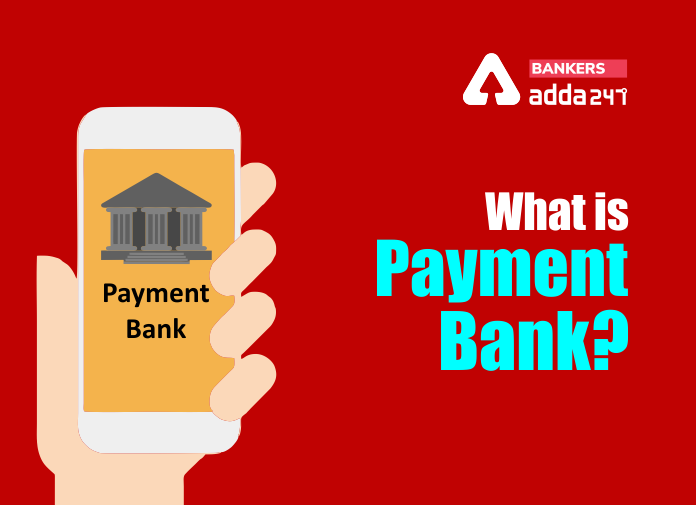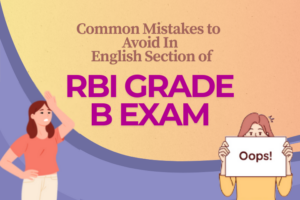Table of Contents
Financial Inclusion is the current hot topic of the nation. Our central bank is making every effort to ensure the financial inclusion of all and payment bank was one such method which was devised to provide payments/remittance services to migrant labour workforce, opening up small savings accounts of small business holders, low-income households, workers of the unorganized sector. For a banking aspirant, it is very important topic because questions are asked from this topic in majority of the banking exams. This is also important from interview point of view because there check the general awareness of the candidate rather than in-depth knowledge. In this article, we will be providing you all the relevant information related to this topic so that you can ace it in your exams.
| How To Crack Bank Mains Exam In First Attempt? | How To Crack Bank Prelims Exams In First Attempt? | Phrase Replacement: Tips And Tricks And Questions With Example |
What is Payment Bank?
Payment bank as discussed above can be defined as differentiated banks like commercial banks in which one can open current and savings account. These banks follow the guidelines laid by the central bank of India, RBI, on 24th November 2014. Payment bank cannot issue credit cards unlike other commercial banks. Earlier there were 11 Payment banks but at present there are only 6 payment banks.
Objective Of Payment Bank
The main objectives of setting up of payments banks by RBI will be to further extend the financial inclusion by providing (i) small savings accounts for the general public and (ii) Access to payments/remittance services to migrant labor workforce, low-income households, small businesses, other unorganised sector entities and other users.
Banking Awareness: For All Banking Exams
History Of Payment Banks
The process of established payment banks started on 23 September 2013, Committee on Comprehensive Financial Services for Small Businesses and Low Income Households, headed by Nachiket Mor, was formed by the RBI. A detailed scrutiny was then undertaken and the final report was submitted where it recommended the formation of a new category of bank called payments bank and then On 17th July 2014, the draft of the guidelines for the payment banks were laid by the RBI. On 24th November 2014, the final guidelines were released by the RBI. On 27th November 2014, The Reserve Bank of India granted “in-principle” approval to the following 11 applicants to set up payments banks under the Guidelines for Licensing of Payments Banks
1. Aditya Birla Nuvo Limited
2. Airtel M Commerce Services Limited
3. Cholamandalam Distribution Services Limited
4. Department of Posts
5. Fino PayTech Limited
6. National Securities Depository Limited
7. Reliance Industries Limited
8. Shri Dilip Shantilal Shanghvi
9. Shri Vijay Shekhar Sharma
10. Tech Mahindra Limited
11. Vodafone m-pesa Limited
Current Affairs: For All Banking Exams
Features of Payment Bank
1. Payment banks are similar to commercial banks except the fact that there is fixed limit upto which it can accept the money of the people as a deposit and that is of Rs. 1 lakh from a customer.
2. Payment banks, just like commercial banks can issue the ATM & Debit cards to its consumer but cannot issue Credit card.
3. Consumer can avail the facility of opening savings and current accounts in payments banks.
4. Payments banks have no authority to provide loans or lending services to customers.
5. Payments banks facilities can only be avail by Indians living in India which means that the people of Indian origin who have settled abroad cannot deposit their money in the payment banks.
6. Payments banks does provide the facility to make personal payments and receive remittances from the cross border on the current accounts.
7. Just like commercial banks, payments banks will have to maintain the CRR.
8. As per guidelines laid by RBI, a Payment Bank will have to invest a minimum of 75% of its demand deposits in government treasury/securities bills with maturity up to one year and hold a maximum of 25% in currents and fixed deposits with other commercial banks for operational purposes.
9. Payment banks are not allowed to pen subsidiaries to undertake Non-Banking Financial Services activities.
10. With prior permission from RBI, Payments bank can work as a partner with other commercial banks and also can sell mutual funds, pension products, and insurance products.
11. It is mandatory for payments banks to use the word “Payments Bank” in their names to look different from other banks.
12. Payments banks are allowed to provide internet banking and mobile banking facility to their customers like commercial banks.
Practice with,
Current Status
Currently there are 6 payment banks which were 11 initially. Payment banks even now follow the same guidelines and work on the same objective. The feature of the payment banks are same as earlier. Given below is the complete list of the payment banks which are currently in business.
| Payment Bank | Headquarter |
|---|---|
| Airtel Payment Bank (1st Payment Bank, April 1 2016) | New Delhi |
| FINO Payment Bank | Mumbai |
| Indian Post Payment Bank | New Delhi |
| Jiyo Payment Bank | Mumbai |
| Paytm Payment Bank | Noida |
| NSDL Payment Bank | Mumbai |
Click Here to Register for Bank Exams 2020 Preparation Material
Visit Achieversadda.com and participate in discussions with other aspirants and achievers. Get answers to your queries and connect with others on Achieversadda.com
| SBI PO 2020 | IBPS PO 2020 | SBI Clerk 2020 | IBPS Clerk 2020 |
| RBI Grade B 2020 | RBI Assistant 2020 | LIC AAO & AE | SEBI Grade A 2020 |



 Simple Tips to Avoid Common Mistakes In ...
Simple Tips to Avoid Common Mistakes In ...
 Important Topics & Shortcuts for IDB...
Important Topics & Shortcuts for IDB...
 How to Prepare for Quantitative Aptitude...
How to Prepare for Quantitative Aptitude...




